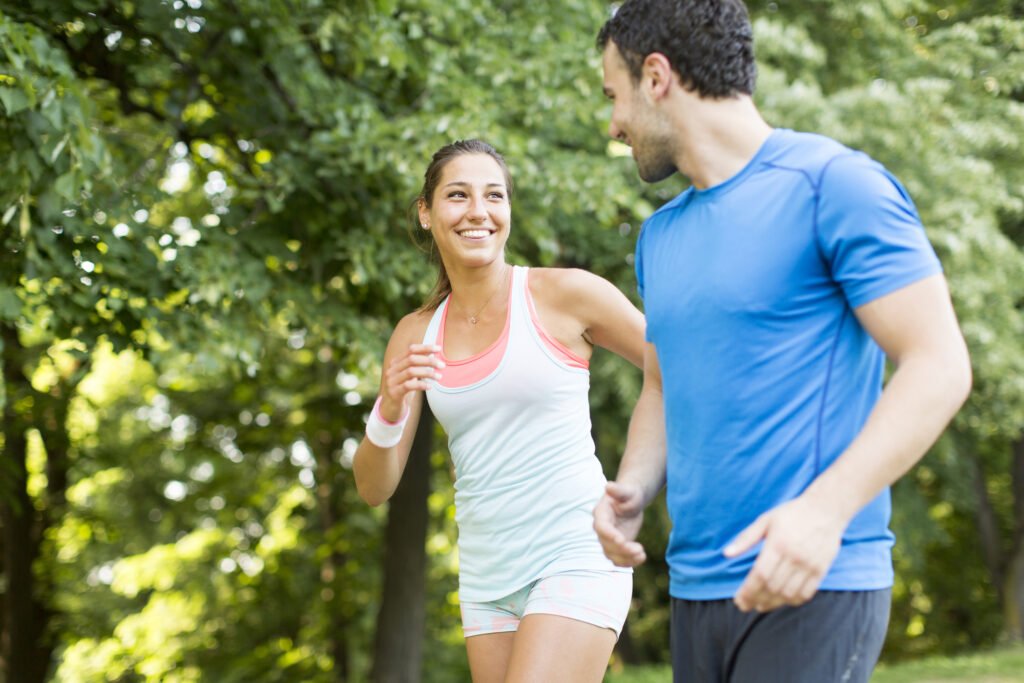There are so many benefits to exercising—even as little as 30 minutes a day! Regular exercise is one of the most important things you can do to optimize your health.
Being active can improve your brain health, weight, disease risk, bone strength, sleep, and more.
Brain (Cognitive) Health
Benefits can happen right after moderate physical activity, such as improved thinking (cognition).
Regular exercise further improves learning and judgement skills as you age. It also reduces the risk of anxiety and depression by releasing hormones that help regulate mood.
Weight Management
Eating patterns and physical activity are both crucial to weight management. Weight gain happens when you consume more calories from food and drink than you burn off. You can feel less guilty about a diet slip-up if you burn more calories that day!
Cardiovascular Health
Heart disease and stroke are the leading causes of death in North America. Studies show that 150 minutes per week of moderate physical activity can put you at a lower risk of these terrible diseases. That’s less than 22 minutes a day!
Type 2 Diabetes
Regular physical activity also reduces your risk of Type 2 Diabetes. Some studies show you don’t even need the 22 mins/day to reduce this risk. But of course, the more exercise, the more significant the risk reduction.
Infectious Diseases
Physical activity can help reduce the risk of serious complications from infectious diseases like the flu, COVID-19, and pneumonia.
People who do little to no physical activity are extremely likely to be sicker from these infections than those who are physically active. A CDC review found physical activity is associated with fewer deaths and hospitalizations due to these respiratory illnesses.
Some Cancers
Being a physically active individual will lower your risk of developing common cancers, including breast, bladder, colon, uterine, esophagus, kidney, lung, and stomach.
Bone Health
Every year that passes, our bone density can lessen. This is more significant for women who are post or perimenopausal. Our bone density affects how strong our bone structure is, and less of it makes us more susceptible to fractures.
Protecting and optimizing your bone, muscle, and joint health is essential. These structures allow us to move and do the things we love, increasing our quality of life!
Weight-bearing exercises are the ones that optimize bone health. Resistance training and lifting weights improve musculature and, subsequently, overall strength.
A terrible fact is that those 70+ years of age who fracture their hip and are hospitalized are less likely to come home due to other health concerns, hospital-acquired infections, muscle loss from disuse, and so on. The deterioration could mean becoming panelled for a care home or even passing on.
Improve the Ability To Perform Your Daily Tasks and Reduce the Risk of Falling
Everyday activities for many include playing with grandchildren, climbing stairs, shopping for groceries, and walking the dog. Not being able to perform one or many of these daily tasks is called a functional limitation. Physically active older adults have less of a risk of functional limitation than those who are not active.
These active individuals also have improved balance, which reduces their risk of falls, limiting the risk of serious injury or hospitalization.
Manage Chronic Health Concerns and Disabilities
Regular physical activity can:
- Reduce pain and improve function for those living with arthritis
- Improve mood and sleep for those with anxiety, depression, or other mood disorders
- Help control blood sugar levels and thus reduce the risk of developing peripheral neuropathies (nerve damage in extremities), vision problems (retinopathies), and risk of heart disease
- Help support those living with disabilities to optimize function and independence
What Does This Have To Do With Physiotherapy or Athletic Therapy?
Many people state that one or more of the following are huge limiting factors to their getting more physically active.
- Pain
- Poor balance (+/- fear of falling)
- Fear of making their pain worse or reinjuring a recurring injury
This is where we can help! Often, recurring injuries stem from muscle weakness or imbalance, hypermobility (too much movement at a joint), or movement restriction (at a joint or muscle or both). We’ll do hands-on treatments like soft tissue release, muscle stretching, joint mobilizations, manual traction (elongating or decompressing the spine), muscle energy techniques, and more. This will make you feel better right away. It’s the exercise for strength, balance, flexibility, and more that will keep your symptoms from returning! We’ll design a home exercise program that best suits your needs, goals, and abilities.
Movement lubricates your joints. Many living with osteoarthritis fear too much movement as they do not want their symptoms to worsen. However, most people who experience pain with osteoarthritis are not moving enough. The pain is a reminder to the body that they are stiffening up and need to move. Most do the very thing that makes their condition worse—being sedentary.
Don’t let these concerns get in the way of improving your overall health. We’re here to help!
“Take care of your body, and it will take care of you!”—Fit4Life Physiotherapy

